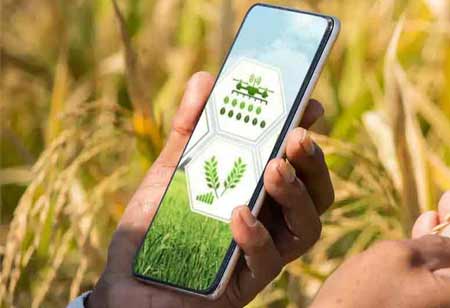Thank you for Subscribing to Agri Business Review Weekly Brief
Importance Of Crop Diversity
When we drive around the fruit and vegetable corridor in the supermarket, many of us are unaware that what we see is just a small portion of what could be there.

By
Agri Business Review | Monday, November 14, 2022
Stay ahead of the industry with exclusive feature stories on the top companies, expert insights and the latest news delivered straight to your inbox. Subscribe today.
A major step in keeping and increasing seed diversity is the creation of so-called gene banks.
FREMONT, CA: When we drive around the fruit and vegetable corridor in the supermarket, many of us are unaware that what we see is just a small portion of what could be there.
Scientists estimate that about 400,000 plant species are on our planet, and approximately half are edible. We have possibly utilized about 7,000 plant species in our agricultural systems throughout history.
Yet, today only about 30 crop species constitute 90% of the calories in our food, and just three species (rice, wheat, and maize) account for approximately half of the human calorie supply.
Over the 20th century, we have missed 75% of our crop diversity. The main grounds for this dramatic decline is that our industrialized food system focuses on high crop productivity, standardization, and uniformity rather than diversity.
Some of the lost species might still be present in somebody’s garden or a dusty seed jar in some basement. But they vanished from our seed catalogs and are no longer available for commercial farming.
A Risk To Food Security
Decreasing crop diversity poses a large threat to food security and human health. With the world population expected to reach about 9.7 billion in 2050, food security remains a major challenge.
It may seem unreasonable but concentrating on highly profitable crop varieties while ignoring the qualities of less productive varieties endangers overall food security. Based on small number of crop species and types makes the food system insecure to shocks like droughts, pests, and diseases. In a regular agricultural system, the failure of one main crop can have fatal consequences.
With climate change, crop failures are expected to become more frequent. Crop diversity plays a major role in tackling this challenge. Different crop varieties have different qualities. Some are very productive, while others are stronger to droughts, pests, and diseases and execute better in negative conditions. High crop diversity raises the resilience of our food system and, hence, food security.
Decreasing Crop Diversity And Human Health
Food security is not just about quantity but also quality. Estimates indicate that one in three people undergo micronutrient deficiencies. Simultaneously, almost 2 billion people are overweight or obese.
So to fight malnutrition and diet-related diseases, people need access to calorie-rich foods, diverse food, and a full range of nutrients. However, reduced crop diversity makes it hard to augment the energy-dense part of the human diet with nutrient-rich foods. Combined with globalization, this has caused human diets to become more uniform and less healthy worldwide.
Inverting The Downward Trend
Fortunately, nowadays, we’ve observed an increasing recognition of the significance of crop diversity. A major step in keeping and increasing seed diversity is the creation of so-called gene banks.
Today exceeding 1750 gene banks all over the world gather, preserve and share all kinds of seeds to encourage agricultural research and the development of new varieties. Regardless, the accessibility to (new) varieties stays challenging, and the full possibility of gene banks for breeding and research still must be explored.
See Also : Diversity and Inclusion Services Companies in Canada





